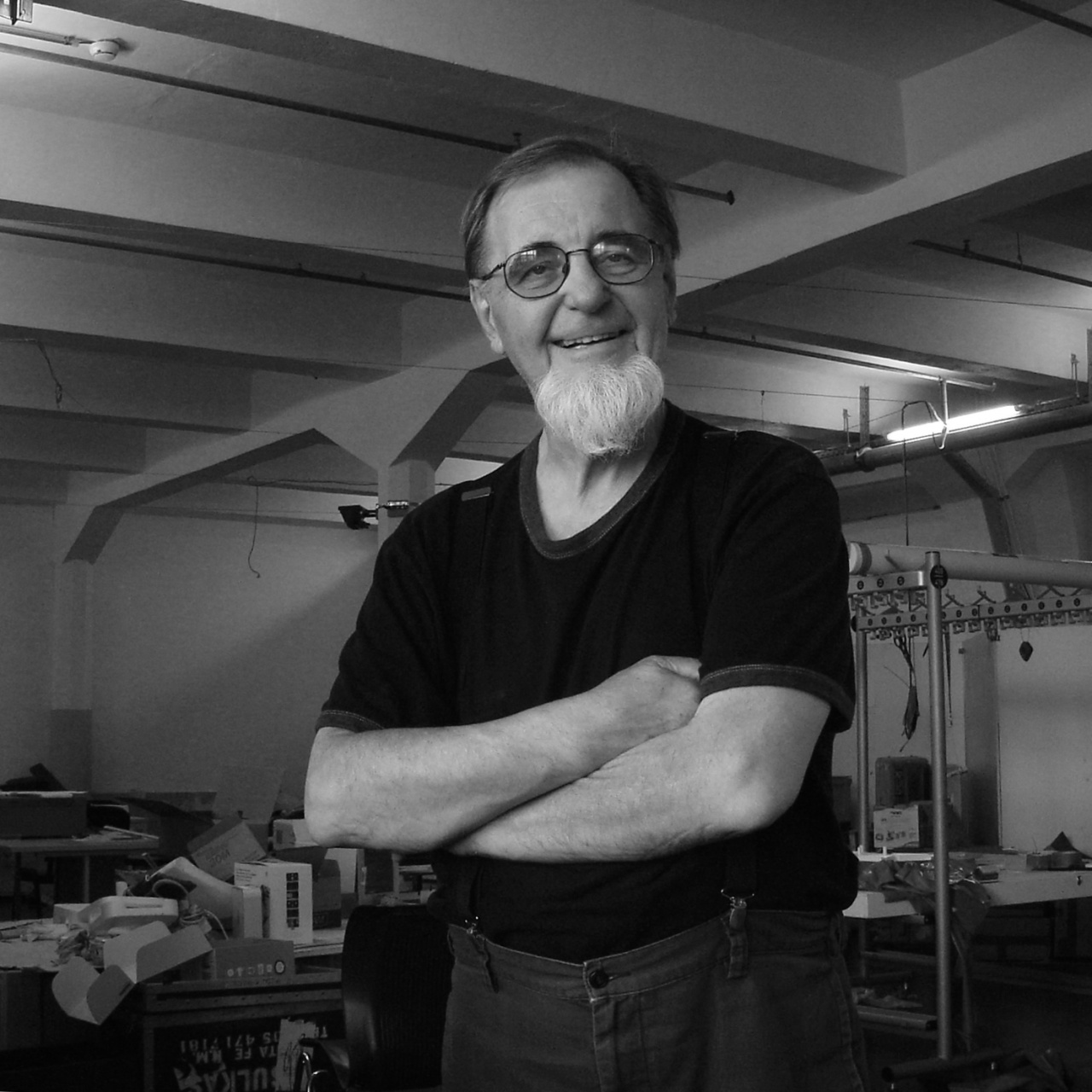Woody Vasulka
Year of birth, place
Year of death, place
Role at the ZKM
- Guest Artist
- Artist of the Collection
Biography
Woody Vasulka studied engineering at the Industrial Engineering School in Brno and at the Film Faculty at Academy of Performing Arts (FAMU), in Prague in the 1950s and 1960s. He immigrated to New York in 1965, Since 1969 he has been working primarily with the new medium of video researching the structures of the electronic image. Along with his colleague and life companion, Steina, Woody Vasulka counts among the pioneers of video art. Together, they founded the experimental theater for electronic arts, The Kitchen, in 1971. In 1973, Vasulka accepted an invitation by Gerald O’Grady to the then newly established Center for Media Study at the State University of New York in Buffalo (New York) where he took up a professorship and taught until 1979. The Vasulkas have been living and working in Santa Fe (New Mexico) since 1980 where they initiated the research institute Art and Science Laboratory, in 1999.
The focal point of Woody Vasulka’s artistic work is the thorough going analysis of the materiality of the video as a medium, the research of its inherent laws and the potential extension of the electronic image by the application of analogue and digital tools. In numerous works since the 1960s, he has researched, both formally and in terms of content, the narrative, syntactical and metaphorical potential of electronic imaging and processing, in cooperation with Steina and numerous of technicians, programmers and artists. One consistently important point of departure in this connection is the relationship of electronic image and sound signal, both of which follow the same physical laws. Hence, Vasulka’s language of images consistently draws on the translation of electronic signals in grid and wave forms and images synthetically generated by means of frequency and voltage and later by digital code. Early technical studies from the 1970s, predominantly videos, screen-scans and prints – incomplete series – developed during the 1980s to lengthier, narrative video works such as »The Commission« (1983) or »Art of Memory« (1987). Vasulka understands images as objects on the basis of their technical composition and representational potential. In addition to digital video processing and algorithmic image generation (vide the development of the Digital Image Articulator together with Jeffrey Schier, in 1979) he began to occupy himself increasingly with three dimensional mechanical languages and robotics. In the series of works titled »The Brotherhood« (1990–1998), he developed interactive sound-, image- and robotic installations, which visualize the poles between reality (theater, installation space) and virtual space (computer, video, sound).
For the art of the moving image, Vasulka represents the central figure of that group of artists work transitioning to the electronic and digital age. Nobody quite understands the structure and potential of the digital image as thoroughly as Vasulka. Accordingly, he finds himself in an ongoing process of research and experimentation. Thus, one defining characteristic is an immense productivity and continuous artistic development, which has led him from the technological development of analogue and digital media image manipulation to interactive, machine-guided spatial installations. Woody Vasulka continues to be fascinated with tools which facilitate the potential novel control and manipulation of images, and which, consequently, disclose to the observer the structure of the respective media.
____________
Woody Vasulka's artistic roots lie in documentary film. After moving to New York in 1969 he worked there with famous film artists on the extension of filmic possibilities on a technical basis: ranging from the development of new cameras to that of novel projectors. It was within this context that he first occupied himself with the medium of video. Since then, Vasulka has investigated the structure and materiality as well as extension possibilities of the electronic image [frame] by means of analogical or digital tools. Unlike anyone else, he researched the self-contained realm of apparatuses, and with this expertise he created altogether novel kinds of images, whose machine aesthetic overpowered their filmic one. His apparatus-images are as technically artificial as no images have ever been before. He repeatedly worked with Steina and other artists, but also together with technicians, programmers, and information technology developers. Formally as well as with respect to content, the narrative, syntactic, and metaphoric potential of electronic image production and processing moved into the center of his interest. For example, he investigated the relationship between electronic images and audio signals, which follow the same physical laws and could be worked with using the same technical devices. The initial results of his analyses were mostly technical studies, in the form of videos, screen image scans, and printouts. Later longer, independent and narrative video works were produced, such as »The Commission« [1983], or »The Art of Memory« [1987]. Through digital video processing and the algorithmic generation of images and beyond [the 1979 development of the »Digital Image Articulator«, together with J. Schier], he increasingly occupied himself with three-dimensional image creation, machine languages, and robotics. In the series of works »Brotherhood« [1990-98], he developed installations with interactive sound, image, and robot components.
Woody Vasulka's continual artistic development ran parallel to the media’s technical development—ranging from analogic through digital image manipulation to interactive, machine-directed spatial installations. Even today, Vasulka is fascinated by the tools which enable novel control- and manipulation possibilities, thereby revealing each medium’s structure to the viewer.
